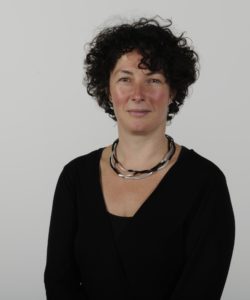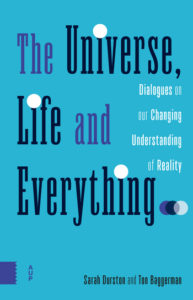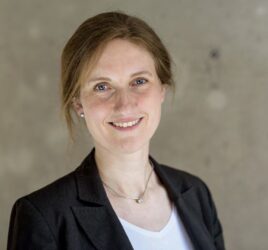
The Universe, Life and Everything…: Dialogues on our Changing Understanding of Reality
The new BCN newsletter is out this week and we’re really happy to share with you an interview with Sarah Durston, conducted by Jaime Mondragon, PhD candidate from the Medical Faculty.
 Sarah Durston is a professor at the Univerity Medical Center Utrecht. She is the head of the NICHE (Neuro-Imaging in Childhood) lab in the Department of Psychiatry. Her work centers on developmental disorders, including ADHD and autism, focusing on the biological pathways involved in their development. Her group is keen on understanding these pathways by underpinning the relationship between genetic susceptibility and neurobiological measures, as well as the relationship between neurobiological measures and cognitive deficits.
Sarah Durston is a professor at the Univerity Medical Center Utrecht. She is the head of the NICHE (Neuro-Imaging in Childhood) lab in the Department of Psychiatry. Her work centers on developmental disorders, including ADHD and autism, focusing on the biological pathways involved in their development. Her group is keen on understanding these pathways by underpinning the relationship between genetic susceptibility and neurobiological measures, as well as the relationship between neurobiological measures and cognitive deficits.
Recently, she co-authored the book The Universe, Life and Everything…: Dialogues on our Changing Understanding of Reality, which presents a different perspective on how we should approach science and the emerging paradigm shift in different scientific fields. The book is engaging, employing a nonchalant tone, yet appealing to the reader regardless of their scientific background. The book presents interesting ideas about debatable issues that make a good topic of conversation. Furthermore, the authors bring to the floor interesting questions about how we have approached science and how we should go on from now. The book is available in open access through http://oapen.org/search?identifier=637920. The following questions were answered by Sarah for this book review:
Who is the target audience of this book?
I wrote the book with co-author Ton Baggerman, a psychotherapist. We wrote it for anybody with an interest in science really. We were introduced to each other because we were each asking similar questions about neuroscience (generally) and psychiatry (more specifically). We met a number of times and had stimulating discussions about what we felt were the shortcomings in the field. We were both reading widely on this and related topics and discovered that there were other scientific fields where scientists were also questioning the reigning paradigms. This led to the idea of seeking out these people to hear about the paradigm shift in their respective fields, and ultimately to the dialogues that constitute this book.

What advantages do you see in writing a book in a dialogue format?
We chose a dialogue format because we wanted to allow our dialogue partners to speak for themselves, rather than to try to transcribe the points they were making. Also, a dialogue makes for a livelier read than a monologue by the authors. In talking to the people in the book, it was striking how similar what they had to say on the paradigm shift was, despite the wide range of fields they are from, from quantum and theoretical physics to economy and political sciences. That is what ultimately convinced me to bring the project to its completion and spend the second half of my sabbatical at the Netherlands Institute for Advanced Study (NIAS) in 2016/2017 finishing the book. It turned out to be quite an undertaking, because having a chapter for each dialogue would have been boring, given the similarities between the points made, so I had to restructure it entirely.
You state, “The goal of this book is to sketch a picture of what this new, connected world-view might look like”. in this regard, how do the perspectives of reality provided by social sciences, natural sciences and formal sciences help in solving current scientific problems?
The dialogues point out some places where our reigning scientific paradigm of reductionist materialism falls short and simply does not provide sufficient answers, such as consciousness and modern physics. The problem, I think, relates to the issue that we all still tend to have Descartes’ tree in our head as a way of thinking about a hierarchy among the sciences. The trunk of the tree represents physics, the most fundamental of the sciences, and the other sciences branch off from it, with chemistry considered closer to the trunk than biology, for example, and biology considered closer and therefore more fundamental than the social sciences. The formal sciences come into this scheme as supportive, providing the mathematical and logical basis that all sciences are ultimately built on. Now, this is a model of thinking about science that has been useful and allows for the less fundamental sciences to borrow (models, maths, logic) from the more fundamental ones. However, it is hierarchical, as is reflected by a tendency to consider social science and the arts as somehow “softer” than more fundamental sciences. Furthermore, we have forgotten that the tree has roots and that these roots are the philosophy behind (beneath) our science that preaches materialism and a hierarchical order. One thing that is changing in our (scientific) paradigm is that we are coming to realize that there is not a “natural order” of the sciences, where some are more fundamental than others, but rather that fundamental sciences can also learn from the so-called softer ones. I like to cite Alex Wendt, who said that he didn’t understand quantum mechanics until he realized that essentially these quantum systems were behaving like people, and therefore interacting. Thinking about it that way helped him get a handle on it. And quite concretely: we know from the work of Bruno Latour and colleagues that science is a human endeavor. Scientists make mistakes, can have alternative motives, and even when they engage fully in an honest attempt to deliver honest science, at the end of the day we have to interpret our data. Science is all about the people that do it. So, fundamental, social and formal sciences should look to and learn from each other. Ultimately, we need to let go of the idea of a scientific hierarchy and use these approaches in a reciprocal way.
What factors do you think make scientists reluctant to change how they think?
Thomas Kuhn wrote a seminal book on this back in 1962, entitled The structure of scientific revolutions. It is a classic and still in print today. In it, he argues that scientific progress is not made in a gradual, continuous and incremental fashion. Rather, science proceeds through revolutions, when the accumulation of anomalies (i.e., data that do not fit the reigning model) leads to paradigm shifts. Crucially, he argued that it is not only the accruement of anomalies that set off the revolution, but rather the promise of the new paradigm for solving old problems. He brought sociology into the mix early on, you might say, and he described quite clearly that these revolutions also involve resistance from the science establishment. The more time and effort you have invested in scientific training and building a scientific career within the context of a ruling paradigm, the more evidence you are going to want to see that is wrong before you are prepared to change your thinking. It is, however, what I think is happening now, and what persuaded me to finish the book. We are seeing a shift in thinking in a number of scientific fields simultaneously, and the direction of the shift is similar. To me, that suggests we may be in the process of a scientific revolution in Kuhn’s sense of the word.
At what stage of our academic formation should interdisciplinary perspectives regarding problem-solving and critical thinking be introduced?
When you go back to the origins of the modern sciences, great thinkers like Descartes were pre-disciplinary: they considered the nature of reality from an overarching perspective. From those beginnings came what we now consider to be our scientific disciplines, and even those are not carved in stone. New fields arise all the time through interactions between existing ones. Consider for example the field of quantum biology that is arising through the discovery that quantum processes play a role in certain biological processes. As such, I think being truly monodisciplinary is an outdated idea that stands in the way of scientific progress. We all need to be able to look over the boundaries of our own fields, and reflect critically on those boundaries. Therefore, students need to be introduced to this sort of thinking very early on in their training. And that also includes teaching them to think critically about the philosophy of the discipline they are studying – what are the assumptions underlying it? These are questions we need to learn to ask early on. And besides, it’s fun to think about what you think you know but actually don’t.
What is your opinion about the ideal composition of research groups? Could multidisciplinary and multicultural groups help change how we view reality in science?
Well, given my reply to the last question, it will come as no surprise that I feel that multi-disciplinarity is important for any research group. But I like the point about culture too: we are all raised within a certain cultural context that colors the way we perceive reality, including science. This is simply part of our cultural baggage and is something we are not usually aware of. It can sometimes lead to clashes in the workplace if cultural norms and expectations are inadvertently violated. This is of course no different than would happen in any other workplace environment and is part of the sociology of science practice. However, if you can make this kind of process explicit and address it, having cultural diversity in a research group also offers great opportunities to look at a problem from a multitude of angles and thus get a better grip on it. It illustrates that science is only as good as the people who do it, and after all: we do it together. We, people, are social animals and we need to use that to address the nature of our reality that, ultimately, we are creating.
Note: Sarah Durston’s Photo by Chris Timmers. Cover photo licensed under CC0 1.0




